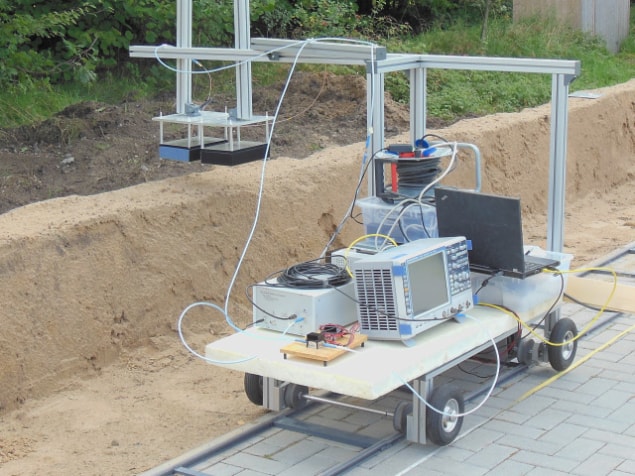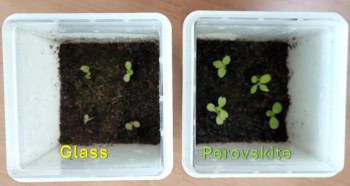
Ground-penetrating radar can improve the automated harvesting of asparagus spears. That is the conclusion of a new study by researchers from Germany, which demonstrates how radar can detect the best height at which to cut asparagus plants to maximize crop yield. Asparagus harvesting is a labour-intensive process and the researchers believe that the new technique could maximize production while minimizing damage to the part of the plant that is left in the ground to produce future crops.
Asparagus plants consist of two parts – the root network and the edible spears. The root network comprises both downward-growing roots and the sideways-growing rhizome from which multiple spears grow upwards. White asparagus is popular in much of Europe and is usually grown buried in ridges of soil. This forces the spears to grow underground, where the absence of light stops them from turning green.
During harvesting, spears are cut from the root network. Manually harvesting is labour intensive because it involves cutting the spears individually. Automatic harvesting sees the whole top layer of the soil sliced off – from which severed spears are sieved out. The challenge with automation lies in selecting the appropriate depth of soil to remove. If too little is removed, then valuable crop remains wasted in the ground. If too much is removed, then the cutting machinery may damage the rhizomes or even kill the plants entirely. Individual plants normally provide a crop for 10 years, so not damaging the plants is desirable. While manual inspection of selected plants can help guide automatic harvesting, the variation between plants makes selecting the optimum height challenging.
Success with tree roots
“A few centimetres of additional cutting depth, and hence average [spear] length, can make a few thousand euros difference on a typical asparagus field,” explains Jörg Schöbel of the Technische Universität Braunschweig – an institution in a region famous for its asparagus production. Schöbel and his colleagues’ previous research had focused on more established applications for ground-penetrating radar, such as the detection of buried pipes and cables for civil-engineering purposes. The technique uses reflected radio pulses to image beneath the ground and had previously been applied successfully to monitor tree-root growth. When presented with the asparagus problem, Schöbel’s team immediately recognized the technique as a potential solution.
The researchers created a detection system consisting of a radar transmitter and receiver mounted on an adjustable framework, attached to a rail-guided trolley (see image). The system scans the top surface of the asparagus bed using radio-wave pulses in the 0.2–2 GHz band as well as continuous-wave radar. To test their set-up, the researchers planted a 9 m long test bed of asparagus, on which was heaped a ridge of soil about 0.5 m in height. Plants in the first part of the bed were spaced at a distance of 1 m apart, while the rest were planted 0.3 m apart, the latter being typical of a large-scale asparagus plantation.
As long as the asparagus are planted close together, where radar signals overlap, the top of the plant’s root networks can be detected as a horizontal reflection pattern in the radar data. To calculate depth from the low-contrast reflections recorded, the researchers used a digital processing algorithm called “phase congruency” – which provides edge detection based on the frequency, rather than time, domain. Knowing the rough depth of the asparagus, reflections from the plants can be distinguished from those from the soil surface above and the solid ground beneath.
Margin of safety
From this, a small safety margin can be added to produce a single cutting depth for the entire field or, to better maximize crop yield, the cutting depth could be dynamically adjusted as the harvester moves across each ridge. Alternatively, the radar apparatus could be attached to the harvester itself, allowing scanning and cutting to be undertaken in tandem.
With their initial study complete, the researchers are now looking to further develop and simplify their detection technique, with the long-term aim of working towards a commercially viable application. One particular challenge to be overcome is how to refine the signal-processing technique to handle different soil conditions. While the researchers tested their system with the dry, sandy soil found in the Braunschweig region, detection becomes more difficult with heavier and more humid soils, which more strongly absorb high-frequency radar signals.
The research is described in the Journal of Applied Geophysics.



